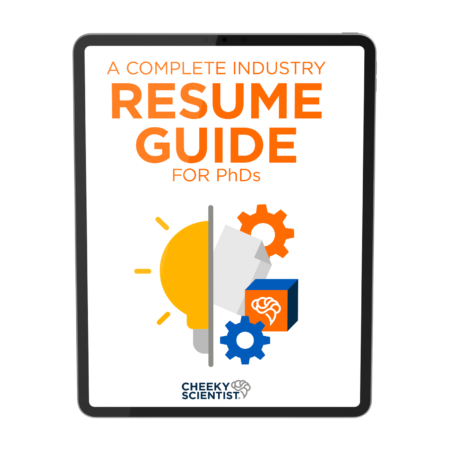7 Powerful Tips For PhDs To Wow Hiring Managers With Their Resume

I’m happy to share with you that I’ve recently transitioned into an experienced design researcher position.
Here is what my transition timeline looked like:
- Graduated in Jan
- Started looking for a job in March
- Joined CSA in May
- Worked part-time since June
- Got 1st offer in September
- Got 2nd offer in October
- Accepted the second offer
I want to share some takeaways from my transition experience.
Networking is important.
I landed my first couple of part-time jobs by networking (informational interviews, to be specific).
The part-time work experience really helped me build up my work experience and gave me some hands-on experience to talk about in the interviews.
Networking with other professionals also helped me to learn the industry norms and lingos so that I can sound more relatable to other industry people.
Don’t be afraid of cold-contacting people on LinkedIn or going to networking events. People are usually very nice when you try to have a conversation.
Resumes, interviews, portfolios, and all forms of professional communication are ways to communicate your skills and expertise in a relatable manner.
Learning how to convince people from different backgrounds is really a skill that we all need to practice often.
As PhDs, we all have what it takes to do the job.
But the most important thing is to let others know that we will be able to do the job.
We need to learn to speak their language (aka sound professional).
The process is stressful.
So make an effort to keep your mind and body healthy and always try to be positive.
This community has great support and helps you remember your value as a Ph.D.
How Your Resume Can Prevent You From Getting Hired
A resume is an interesting piece of your job search strategy.
Because a perfect resume is not enough to get you a job, but a bad resume will prevent you from getting a job.
As a PhD you might think, if I just get this resume perfect, if I show that I have all the skills, I will get hired.
You’re wrong.
Your resume needs to go hand-in-hand with a robust networking strategy.
But a robust networking strategy coupled with a poor resume is not going to work in your favor either.
It takes both a great resume and strong networking to get hired in industry.
For example, Harvard Business Review reported that 48% of all hires come from an employee referral.
And Talent Works found that using the right leadership-oriented words on your resume can boost your hireability by 51%.
You put those two things together and you have earned yourself a seat as a top candidate.
So what does it take to write a resume that will get you a job offer?
A resume that, alongside a well thought out networking strategy, is the key to your job search success.
7 Tips For PhDs To ‘Wow’ Hiring Managers With Their Resume
Your industry resume is different than an academic CV.
It should be tailored for each position.
The goal of your resume is to convince the hiring manager to bring you in for an interview.
The goal of your resume is NOT to recount all of your accomplishments.
A good industry resume is focused, relevant, and powerful.
Here are 7 tips to help you craft a resume that clearly conveys your value as a PhD…
1. Use single sentence bullet points.
There is nothing worse than a bullet point that never seems to end.
It just drags on and on becoming increasingly hard to understand and leaves the reader read to throw the resume in the trash.
A bullet point that is too long and does not clearly convey a point demonstrates to an employer that you are not a good communicator.
It shows them that you cannot be succinct.
A super long bullet point shows the employer you don’t understand that communication needs to have a clear goal or purpose.
Is that what you want an employer to think when they read your resume?
To prevent giving a bad impression, keep your bullet point length to a single sentence.
Sure, it can be a compound sentence, but it should not be a runon sentence.
Remember, each bullet point should have 3 parts: transferable skill, technical skill, result.
If you focus on having just those three things in each of your bullet points it will force you to think about what you are really trying to say with the bullet points.
So look at your resume, how many of your bullet points are long, never ending sentences?
How can you change those so that they clearly demonstrate a transferable skill, technical skill, and a result that is relevant to the position?
2. Include numerical results.
In industry, numbers matter.
A lot.
For many PhDs this is a big shift from the academic pursuits of their PhD and/or postdoc.
So you will need to look at the things that you have accomplished in academia through a different lens.
This is the only way to make them relevant to employers.
You need to associate numbers with the things that you’ve accomplished so that a hiring manager can really understand the value of what you have accomplished.
For example, when talking about your communication skills, you should write the actual number of papers or presentations that you have.
This number will do two things.
First, it will make the readers eyes stop for a moment.
When we read things, numbers will jump out and draw our eyes, and when you include them on your resume it will help maintain the reader’s engagement.
Second, this number will give a sense of what you have accomplished to the hiring manager and show them that you know the value of results.
3. Don’t repeat descriptive words.
This is just laziness.
And when you do this on your resume, an employer will read it as laziness, which is not the impression that you want to give.
Also, it’s not even necessary to put a descriptive word at the beginning of your bullet points.
Instead of saying that you are an ‘excellent project manager’ say ‘project manager with xyz experience which resulted in 123 result.’
Let the results show that you are excellent.
Another word to stay away from is ‘Team Player.’
This keyword has been shown to actually make you less hirable.
You may have been told that employers are worried that PhDs won’t be able to work well with other people, but the way to prove them wrong is not to use the phrase ‘team player.’
Instead, use the proper bullet point structure and identify a time that you collaborated with others and achieve a good result.
Show – don’t tell.
That is what you need to remember with you bullet points.
Instead of repeatedly telling them that you are excellent, show them you are excellent with the clear and tangible results that you have achieved.
4. Switch to a functional style resume.
When you are making the transition from academia to industry, without industry experience, a functional resume is a great option for you.
This type of resume takes the focus off the your titles and puts the emphasis on your skills.
This is important because many employers do not understand academic titles and this will hurt you.
Also, applicant tracking software will not be looking for academic titles, it is looking for skill based keywords.
Writing a functional resume is a bit different than a regular resume and there are tips on how to write one here.
But the main difference is that instead of using ‘Postdoctoral Fellow’ as the bolded header in your work experience, you would use the key skill you want to convey.
Here’s an example:
Research & Development Skills
Earned as a Postdoctoral Fellow at XYZ University
- Bullet point 1
- Bullet point 2
- Bullet point 3
This format will allow you to make your academic experience relevant to the industry position you are targeting.
5. Use 3 or 5 bullet points per section.
Under each experience section you should use either 3 or 5 bullet points.
Using just one bullet makes it look like that experience was not impactful and begs the question of why you would include it on your resume.
Additionally, humans like to see things in odd numbers.
So using 2 or 4 bullet points seems like it is unfinished and will subconsciously leave the reader thinking that something is missing.
So, use 5 bullet points for you most relevant experience and 3 for those that are less relevant or where you have fewer results to discuss.
It is not a good idea to use 7 bullet points either.
This is just too long and will make the section look crowded and again convey to the employer that you don’t know how to get to the point.
6. Include your customized LinkedIn URL.
There are things that you just will not be able to include in your resume.
Your resume should only have the most relevant and impactful experiences listed, but the other things you have accomplished are important as well.
This is where your LinkedIn profile comes in.
You should be putting EVERYTHING you have accomplished on your LinkedIn profile.
The more filled out your profile, the better you will appear in search results on LinkedIn.
So, you want the person reading your resume to know that they can also find out more about you on LinkedIn.
All you need to do is, at the top of your resume where you put your name and contact details, include a link to your LinkedIn profile.
However, before you do this you need to go into the settings of your LinkedIn profile and change your LinkedIn URL.
The default URL will likely have a string of letters and numbers, this looks bad.
Change this to be some version of your name and make it professional.
7. Check the visual aesthetics of your resume.
It might seem silly, but it matters what you resume looks like.
You want it to look appealing.
So, take a step back and have a look at your resume.
Does it look nice?
Is the layout organized?
Is it designed well?
The biggest factor to consider here is the amount of white space on the page.
If your sections and bullet points are too close together the resume is going to look crowded and induce a bit of anxiety in the reader.
It will look like something daunting to read.
This is not good.
On the other hand, if you have lots of white space and the bullet points have enough room around them it will look inviting.
The reader will be curious.
This might seem too ‘fluffy,’ but think about an Apple advertisement and then think about a terrible advertisement you have seen online.
What is one of the biggest differences?
Bad advertisements have too many things crammed into them and they look messy.
While your resume is not an ad, it is still a persuasive document.
You are using it to convince the hiring manager to bring you in for an interview, and you should be using the design and layout of your resume to help achieve this result.
Your resume is one key part of your industry job search. It needs to clearly and powerfully convey your value as a PhD. It needs to show the employer why they should hire you. To do that you should use single sentence bullet points, include numerical results, not repeat descriptive words, switch to a functional style resume, use 3 or 5 bullet points per section, include your customized LinkedIn URL, and check the visual aesthetics of your resume. A good resume coupled with solid networking will set you up for a successful industry transition.
If you’re ready to start your transition into industry, you can apply to book a free Transition Call with our founder Isaiah Hankel, PhD or one of our Transition Specialists. Apply to book a Transition Call here.

ABOUT ERICA YI, PHD
Erica has a PhD in Communication & Media Studies from The University of Kansas. She is a social scientist turned UX researcher with 5+ years of experience in communication studies, media user analysis, qualitative and mixed method research design and execution.
More Written by Erica Yi, PhD































